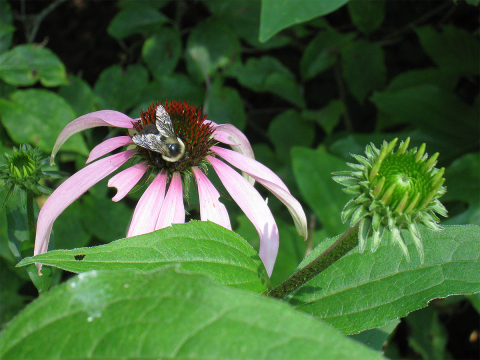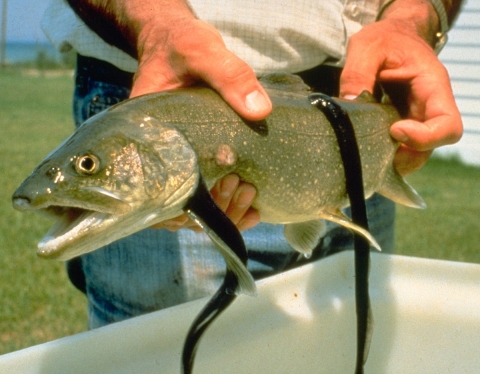Love is in the air on Valentine’s Day for us humans. We focus on our relationships — new and not-so-new, romantic and platonic — with a renewed gratitude for our loved ones. But for many species, appreciating interpersonal relationships is an all-year event.
You’ve probably heard of symbiotic relationships. “Symbiosis" comes from the Greek word for “living together” and describes a close interaction or relationship between two species. Here are some symbiotic relationships that run the gamut of love, from sweet to creepy.
Commensalism = one benefits while the other is unaffected
Freshwater mussels have an unrequited love for fish that starts very early in their lives.
Their unique life cycle involves a symbiotic relationship with specific host fishes. Mussels are practiced in the art of deception, waving lures that mimic prey fish. When the host fish tries to snatch it, the mussel releases its larvae, and they attach to the fish's gills. Once they mature, the mussels drop off and settle to the riverbed. This process doesn’t positively or negatively impact the fish.
While one could argue that mussels and fish benefit from each other — mussels get a free ride and fish get clean water — we think the mussels are a bit more committed to the interaction, as fish receive similar benefits from other bivalves like oysters. Something’s fishy here for shore ...
Learn more about the timeless love affair between freshwater mussels and fish and how we’re conserving mussels so they can continue leaving love notes for their favorite fish.
Mutualism = both benefit
Bees and flowers are a timeless pairing.
Bees are attracted to flowers primarily for their nectar, which serves as a food source. But while they visit, they inadvertently collect pollen on their bodies. When they move from one flower to another, they transfer this pollen, facilitating the process of pollination. Pollination leads to fertilization and the production of seeds, which allows plants to reproduce and maintain their populations.
Like an old married couple, bees and flowers have evolved together. Many flowers have developed specific traits, such as colors, shapes and scents, to attract particular species of bees. Similarly, bees have evolved features that allow them to efficiently gather nectar and pollen from certain types of flowers.
Read about how Wilmington residents established pollinator gardens across the city to play matchmaker for more bees and flowers.
Parasitism = one benefits while the other is harmed
Native to the Atlantic Ocean, sea lamprey play an important role in ocean and coastal- river ecosystems. But in the wrong waters, where there are few natural predators, these voracious feeders can cause havoc. Sea lamprey are parasitic and feed off the bodily fluids of host fish — slurping through their toothy, suction-cup-like mouths — which seriously harms or kills their victims. They usually manipulate, love-bomb and latch onto lake trout and Atlantic salmon.
They’ve caused a big problem in Lake Champlain, where they have few natural predators. Fortunately, the Service and our partners have taken steps to control the sea lamprey population there by adding physical barriers, applying lampricides, and trapping and removing adults before they can spawn. Injuries to trout and salmon have decreased dramatically.
This is an on-again, off-again relationship we wouldn’t mind seeing break up for good.
Read more about how we’re saying ‘see ya’ to sea lamprey through the Lake Champlain Sea Lamprey Control Program.









